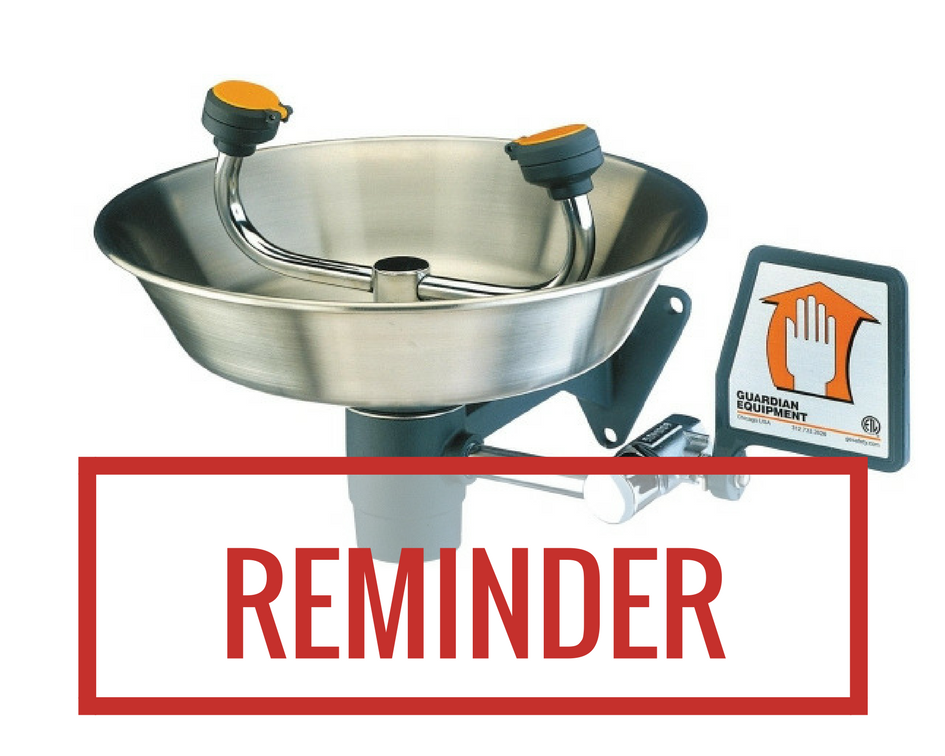
During the most recent round of semi-annual IACUC facility inspections, we encountered many instances of eyewash stations not being flushed monthly. These issues are not specific to one area, but have been found all across campus and in many laboratories. Proper care and regular maintenance of emergency eyewash stations is crucial to protecting your laboratory staff should a chemical splash occur.
An eyewash is required in the work area for immediate emergency use when the eyes may be exposed to injurious or corrosive materials. Corrosive materials include acids with a pH less than 4.0 and bases with a pH greater than 9.0. Injurious materials are those substances not classified as acids or bases that can cause severe injury when in contact with the eye. Examples include formaldehyde, methylene chloride, methyl ethyl ketone peroxide, phenol, etc.
Since immediate flushing of the eyes can reduce the severity of injury and, in many cases, even eliminate permanent damage to the eyes, we ask that you think about the following the next time you enter your lab:
Where is the nearest eyewash to where you will be working?
Take a moment to note the location, and ensure that the path to the eyewash is free of obstacles. In the event of a chemical splash to the eyes, our natural – and often uncontrollable instinct – is to keep our eyes tightly closed. You do not want anything in your way that could cause a trip hazard. Items placed on counters near sinks where eyewashes are located can also block access.
When was the last time your eyewash was flushed?
Routine maintenance is necessary to ensure proper operation. Laboratory personnel are responsible for flushing the laboratory eyewash on a monthly basis and recording the date. Facilities Maintenance will ensure the eyewashes located in the corridors are flushed monthly.
Eyewashes should be flushed for three minutes, or until the water is clear. This will ensure that the water lines are free of sediment buildup and microbial growth due to stagnant water. The required monthly check should also confirm:
- Eyewash access is unobstructed
- Eyewash covers are in place
- The bowl and eyepieces are clean
- The covers come off when the water is activated
- The flow is effective and continuous from both eyepieces
- The water drains from the bowl
Questions?
If you are unsure of how to keep track of monthly eyewash inspections, the department of Environment, Health & Safety can provide your lab with tags to track monthly inspections as they are completed.
Mechanical problems, such as missing or broken eyewash components, should be reported to the Facilities & Operations Call Center at (734) 647-2059.